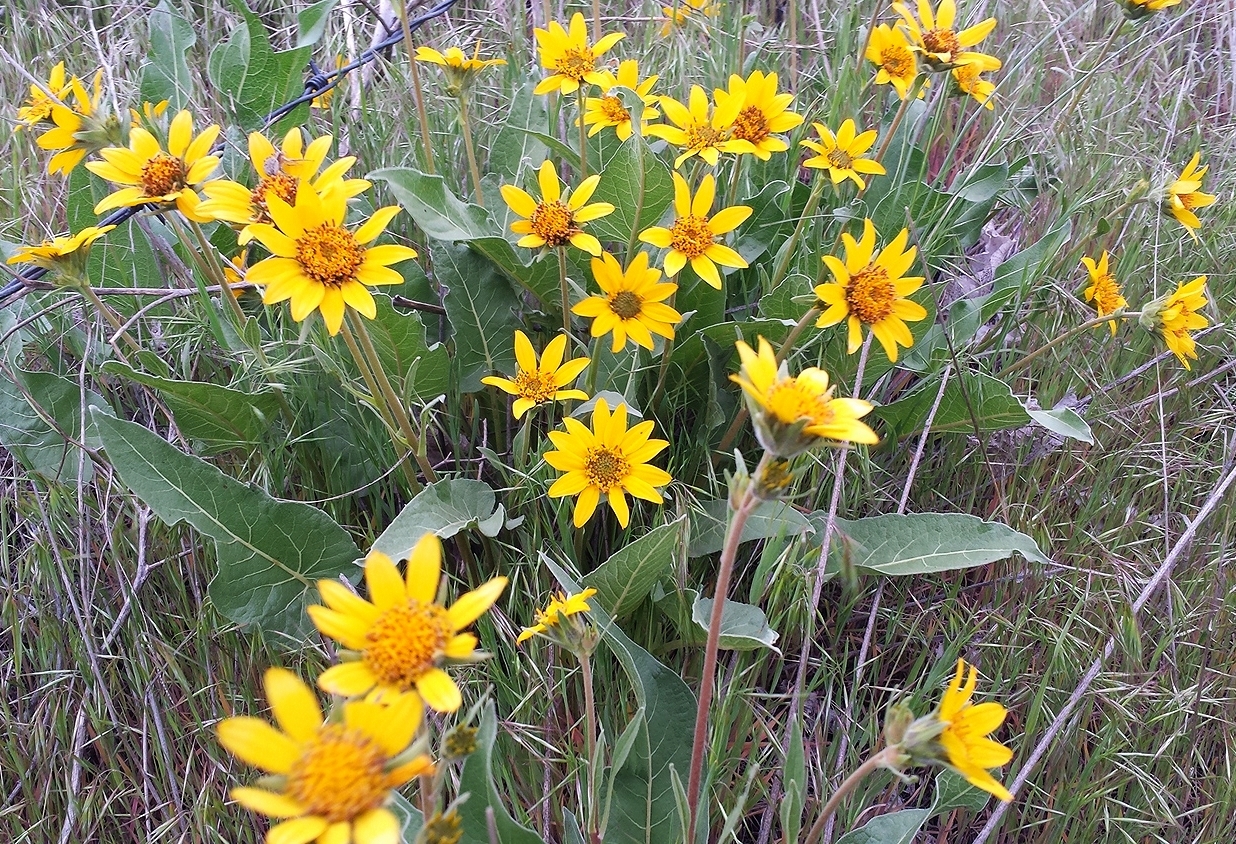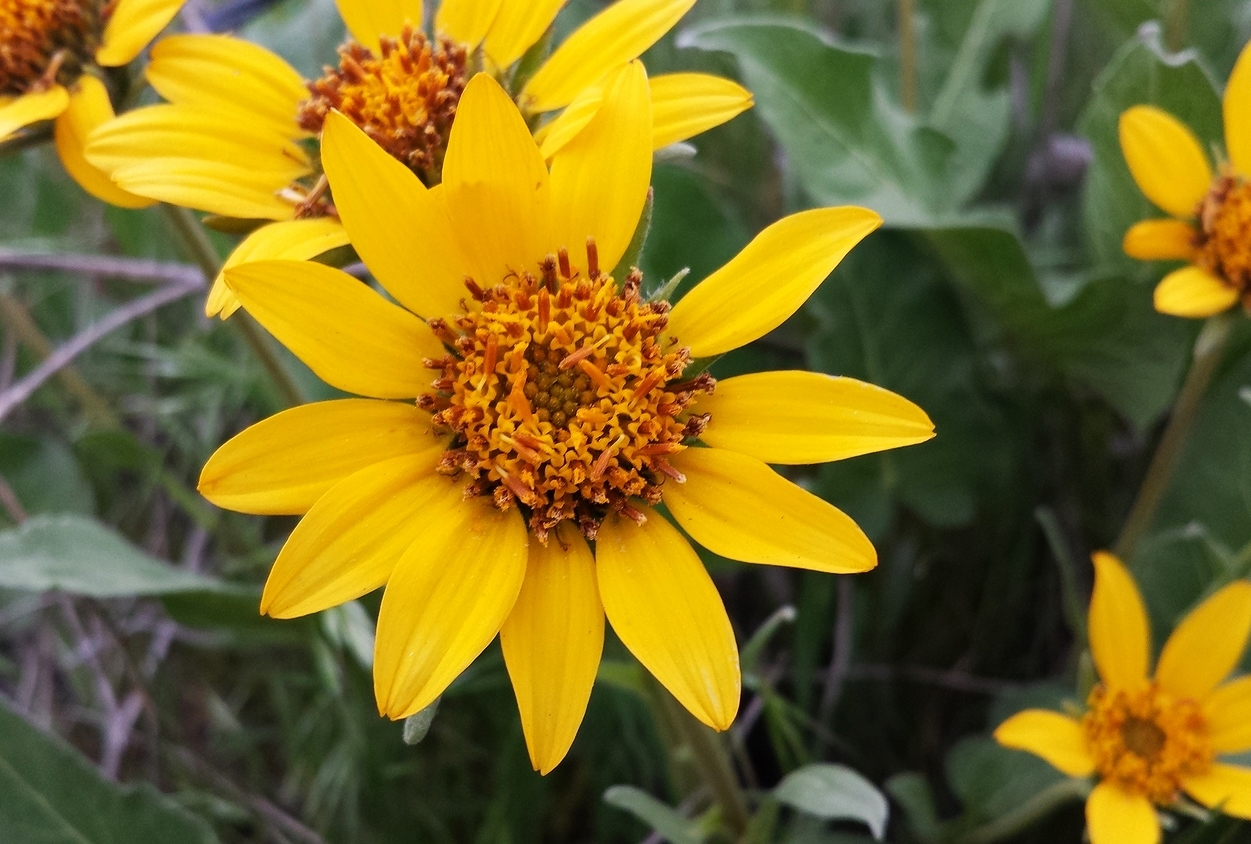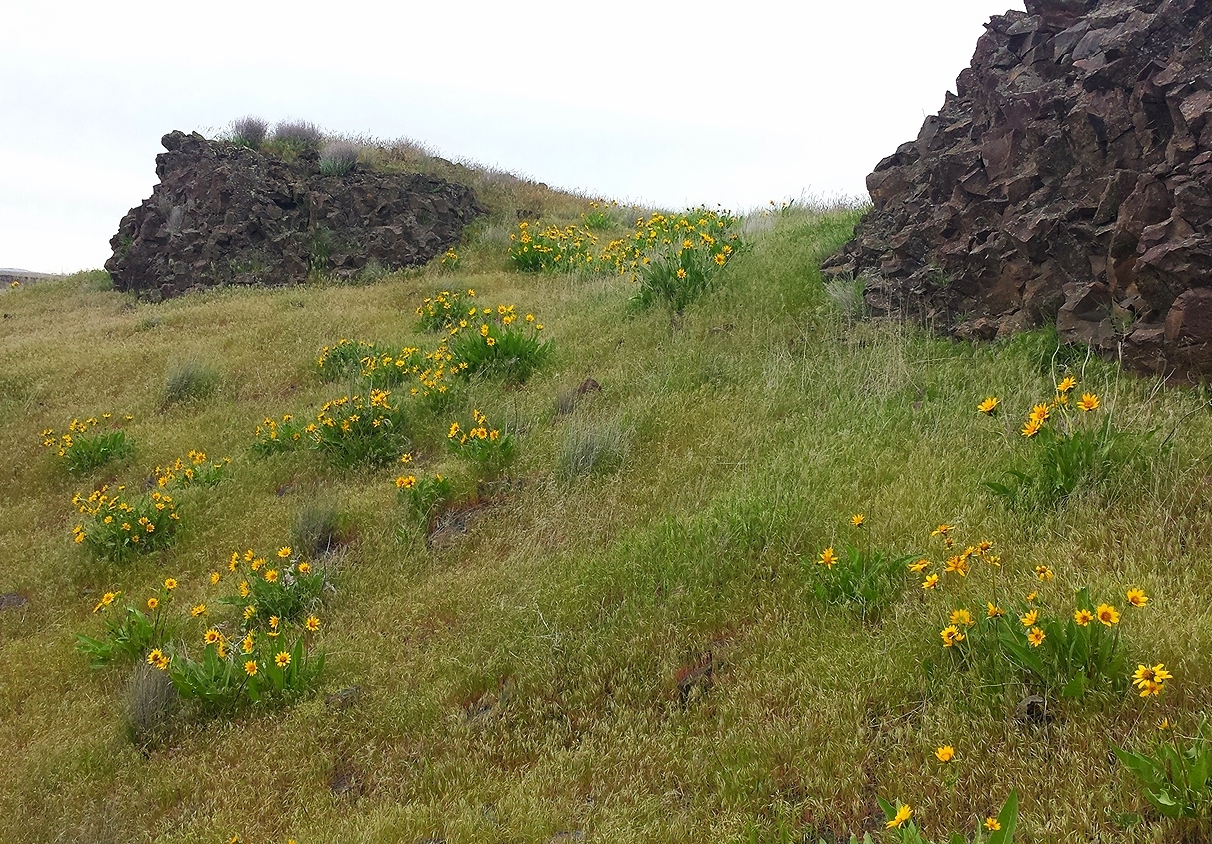Balsamorhiza careyana (Carey's balsamroot)
Drought tolerant perennial similar to Arrowleaf balsamroot (B. sagittata). Showy yellow flowers bloom in early spring. Found on dry open habitats from lower elevations up into the mountains. Occurs east of the Cascade Mountains, extending down from British Columbia, through central/eastern Washington and into north central/eastern Oregon. Leaves, stems and flowers provide valuable spring forage for ungulates. Seeds eaten by birds and rodents; possible indicator of sage-grouse habitat. Good pollinator species. Distinguished from Arrowleaf balsamroot by its smaller flower heads, sandpapery leaves, and less overall hairiness. Hybridization between the two species may occur. Excellent restoration plant.
DISTRIBUTION / ADAPTATION
INFORMATION & ATTRIBUTES
Family: Asteraceae
Duration: Perennial
Growth Habit: Forb/herb
Native Status: Native
Growth Form: Single Crown
Mature Height: 24 in.
Bloom Color: Yellow
Bloom Period: Early Spring
Annual Precipitation: 6-20 in.
Drought Tolerance: High
Shade Tolerance: Intermediate
Elevation:
Fire Resistance: No
Fire Tolerance: Medium
Nitrogen fixation: None
SOIL ADAPTATION
Coarse Texture: Yes
Medium Texture: Yes
Fine Texture: No
Salinity Tolerance: Medium
CaCO3 Tolerance: Medium
pH Range: 6.6-9.0
SEEDING NOTES
Seeds per Pound: 55,000
Seeding Rate: PLS lbs/acre
Season: Spring/Fall
Days to Germination:
VARIETIES & LOCAL ACCESSIONS
None




